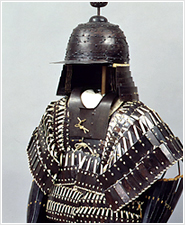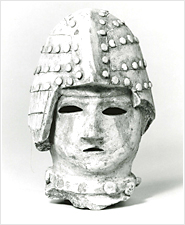General Information
Outline of Kansai University Museum
 Kansai
University Museum (KUM) opened in 1994. The previous museum was established
in 1954 by the Emeritus Professor Masao Suenaga (1897-1991), together
with Kansai University Archaeological Research Institute.
Kansai
University Museum (KUM) opened in 1994. The previous museum was established
in 1954 by the Emeritus Professor Masao Suenaga (1897-1991), together
with Kansai University Archaeological Research Institute.
The museum houses approximately 15,000 objects of archaeological,
historical, ethnological, and art-craft contexts, as well as some natural-historical
materials. The main objects came from the collection of Mr. Hikoichi Motoyama
(1853-1932), the former president of the Mainichi Newspapers.
There are two exhibition galleries, and the main exhibition gallery displays archaeological and historical objects, including 16 Important Cultural Properties (Juyo-bunkazai). The museum also offers special exhibitions and extension classes for the public.
The KUM plays an important role in higher education, through academic research, programs in museum studies, and support for the archaeological training for university students.
 In
April 2005, Kansai University Research Center for Naniwa-Osaka Cultural
Heritage Studies (NOCHS) was established as a part of the KUM activity.
One of the main aims of the NOCHS is to promote cultural heritage studies
in Osaka (Naniwa), focusing on “living heritage” and “cultural resources”.
The center is also willing to assist future development of cultural resources
in communities in Osaka.
In
April 2005, Kansai University Research Center for Naniwa-Osaka Cultural
Heritage Studies (NOCHS) was established as a part of the KUM activity.
One of the main aims of the NOCHS is to promote cultural heritage studies
in Osaka (Naniwa), focusing on “living heritage” and “cultural resources”.
The center is also willing to assist future development of cultural resources
in communities in Osaka.
Facilities of Kansai University Museum
| Founder | Kansai University |
|---|---|
| Established Date | April 1, 1994 |
| Registration | Museum |
| Address | 3-3-35 Yamate-cho, Suita-shi, Osaka 564-8680 Japan |
| Gross Area | 2,970 square meters |
| First Exhibition gallery | 262 square meters |
| Second Exhibition gallery | 350 square meters |
| Research Center | 1,588 square meters |
| Office and Training Rooms | 405 square meters |

